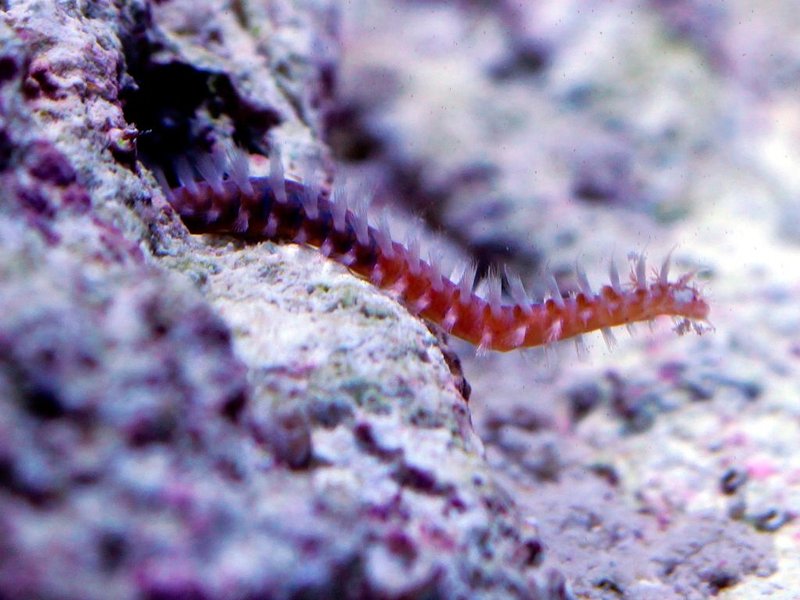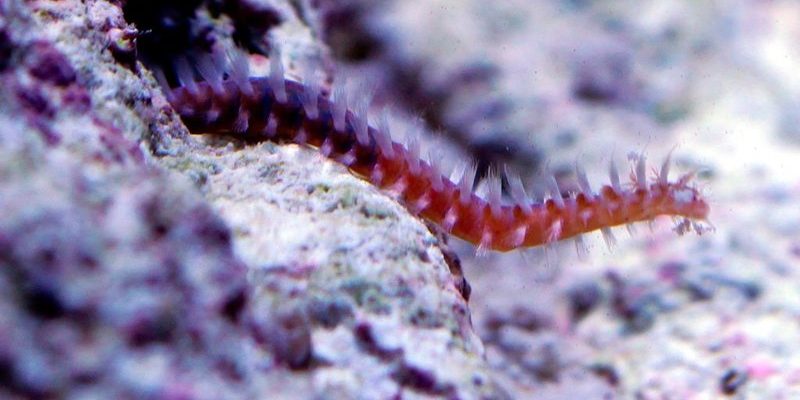
Imagine your aquarium as a miniature world. In this world, saltwater and freshwater creatures can seem like they belong to completely different realms. Yet, just like some fish can adapt to varying salinities, you might be surprised to find that not all bristle worms play by the same rules. So, let’s dive deeper into the topic of freshwater and brackish bristle worms, exploring whether they exist, how they adapt, and what that can mean for your aquarium.
What Are Bristle Worms?
To get started, let’s define what bristle worms are. These members of the polychaete class of annelids are often recognized for their segmented bodies and bristle-like appendages, or chaetae. You might find them in your fish tank or at the beach, where they dig into sandy or muddy substrates. The most common types you’ll encounter are the fireworms (which can sting if handled) and feather duster worms.
Bristle worms play a vital role in their environments. They help break down organic matter, which is crucial for maintaining a healthy ecosystem. Think of them as nature’s recyclers. Their presence can indicate good tank health, and they can even help keep your aquarium clean. But what about their habitat preferences?
Can Bristle Worms Live in Freshwater?
The big question is whether bristle worms can survive in freshwater. Most species thrive in saltwater, thanks to their biology. Saltwater environments provide the necessary minerals and a specific salinity level these worms need to function properly. However, there are exceptions. Some bristle worms, like the Lumbrineridae, have been identified in brackish waters, which is a mix of salt and freshwater.
So, what’s the deal? The truth is, while it’s quite rare, some bristle worms can adapt to lower salinities. This adaptability might be linked to specific genetic traits or environmental factors, like the presence of suitable food sources. It’s a bit like finding out that a fish can breathe air for short periods—it’s not common, but it’s possible!
Brackish Water: A Middle Ground
Now, let’s talk about brackish water, which sits between freshwater and saltwater. This environment can be found in estuaries, where rivers meet the sea. Bristle worms here often exhibit incredible adaptability, allowing them to thrive with fluctuating salinity levels.
If you’re thinking of setting up a brackish aquarium, you might consider introducing some bristle worms. They can help maintain a balanced ecosystem and add interesting dynamics to your setup. However, keep in mind that introducing them requires careful monitoring of water parameters. You want to strike a balance that suits both the worms and any other inhabitants in your aquarium.
Choosing the Right Bristle Worms for Your Tank
When considering adding bristle worms to your tank, it’s essential to choose species that are known to thrive in your specific water conditions. Some good options include:
- Polychaete worms: Known for their adaptability, some species can survive in lower salinities.
- Feather duster worms: Typically found in marine environments but may fare well in brackish settings.
- Spaghetti worms: These are also hardy and can often tolerate a range of conditions.
It’s crucial to do your research! Some bristle worms can become pests due to rapid reproduction or predation on other tank inhabitants. It’s all about striking the right balance and keeping an eye on your tank’s overall health.
Common Myths About Bristle Worms
There are many myths floating around about bristle worms that can make or break your decision to include them in your aquarium. One of the biggest misconceptions is that all bristle worms are harmful. While some species can sting, many are harmless and beneficial.
Another myth is that bristle worms will overpopulate in your tank. While they can reproduce quickly under favorable conditions, the key to controlling their population often lies in proper tank maintenance and ensuring a balanced ecosystem. Regularly cleaning the substrate and monitoring food availability can help manage their numbers without resorting to drastic measures.
Maintaining a Healthy Environment for Bristle Worms
If you decide to keep bristle worms in your aquarium, maintaining the right environment is crucial. Here are some tips to help foster a happy habitat:
- Water Quality: Regularly test the water for salinity, pH, and other parameters that suit both the bristle worms and other tank mates.
- Food Supply: Bristle worms love organic matter. Regularly feed them and ensure there are decomposing materials available for them to munch on.
- Acclimatization: When introducing new worms, take your time. Acclimating them slowly to your tank’s environment helps prevent shock and stress.
By keeping an eye on all these factors, you can ensure that your bristle worms contribute positively to your aquarium’s ecosystem.
The Bottom Line on Freshwater and Brackish Bristle Worms
So, can bristle worms live in freshwater or brackish environments? While the majority are saltwater creatures, some species can adapt to lower salinity levels, particularly in brackish ecosystems. Embracing these fascinating creatures can bring cleanliness and balance to your tank, provided you choose the right species and create a suitable habitat.
Remember, every aquarium is a unique setup, much like its inhabitants. If you’re considering adding bristle worms, make sure to do your research and create an environment that nurtures them while also benefiting the overall health of your aquarium. With a little patience and care, your tank can thrive with these interesting little worms swimming beneath the surface.

